2022 Texas 2x2 List Ranked
There are several things that I am looking for in a good picture book. Is the book well-written and entertaining? Does it provide any learning lessons? Does it have captivating illustrations? Will a kid want to read it again? Will an adult? Finally, I love it when books find creative ways to be interactive. It reminds me of when I was a kid and read The Monster at the End of This Book. Grover spoke directly to the reader and the act of turning the page affected the story. These qualities are all factors that I took into account when ranking this list.
This post contains Amazon affiliate links that support both me and the authors alike.
20. Wonder Walkers by Micha Archer
The entirety of this book is filled with questions that the two main characters, a young boy and girl are asking as they go about their wonder walk. (Is the sun the world's light bulb? Are trees the sky's legs?) The questions seem as if they come from a journal that a parent keeps of funny or interesting things that their child says.
The pages of this book are filled with beautiful collages that use a variety of designs and textures. But as interesting as the illustrations are and as pensive as the questions, none of them are answered and few of them initiate conversations. This is a book that I have a hard time seeing children want to read over and over again.
19. Atticus Caticus by Sarah Maizes, illustrated by Kara Kramer
When I was a kid I went to a babysitter that had a dozen cats. When I developed an allergy to cats it may or may not have been connected to the over-exposure to the animals. Needless to say, I am not a big fan of cats. To me, they are animals that seemed to have tricked humans into thinking that they are pets when it is the cat that is merely putting up with humans by allowing them to feed cats and provide a few places to sleep. This book shows a day in the life of Atticus as he stretches, eats, naps, scratches, bathes, falls asleep on a little boy's head. The silly rhyme scheme seems like the way that you would talk to a pet when nobody else is around. (Atticus Caticus, tummy so fat-ticus)
This is the type of book that you hand your toddler and convince yourself that they are a genius because can already identify a circle, or tell you that the square is blue. The illustrations of this book harken back to The Very Hungry Caterpillar and it is neat to see how Carter Higgan has turned various shapes into designs such as a green square into a frog. However, this is a book that is read purely to teach, and it does that well. It does a great job introducing concepts such as shapes, colors, and placements. You could read this book a thousand times and despite that, Circle Under Berry is a book where your child may hand you the book and you say, "Are you sure you don't want something else?"
At its core, this is a counting book that covers one through ten. It is also a silly rhyming book with dinosaurs playing hide and seek amongst the numbers. Pierre Collet-Derby's illustrations are cute and children will love them. I wish that the rhymes were a bit stronger instead of just being *insert number*-osaurus.
This wordless picture book takes a look at the time-old trope of 'what happens when nobody is around?' Mariachiaira Di Giorgio's illustrations are beautiful. She wonderfully portrays the animals as they move away from slinking creatures in the night to personified beings that are walking upright, playing ring toss, and enjoying the rides of a fair that has been shut down for the evening. The book is filled with full-page spreads of the animals in action. But the thing that makes this book so wonderful to look at, is also the thing that makes it a bit forgettable. I found myself flipping through the pages quickly to get to the next drawing. Then when I reached the end of the book, not enough happened in the storyline for the book to stick with me or make me want to return to it.
Brendan Wenzel has a history of playing with perspective in They All Saw A Cat and A Stone Sat Still, and this book is no exception to that theme. The rhyming scheme is playful and easy for kids to read jumping around the page like the cat itself. One aspect of this book that is really neat is the variety of illustrations on each page. It seems as if there are three different styles to the pictures. The first is the cat itself. The line-heavy scratching coincides with the playfulness of the text. Then there are the vibrantly colored illustrations of the outside world. The cat is partially able to see many fascinating things but is limited by the (many) windows of the house that it resides in. The third style of illustration was my favorite. These are the less-colored, less-completed sections that are manifestations of the cat's imagination. This is where the reader is able to see the fringes beyond the limitations of the windows. A man who is working in the sewer becomes a giant holding pizza. But what makes this book special is how the ending makes you immediately want to close the book and start all over again.
14. Seaside Stroll by Charles Trevino, illustrated by Maribel Lechuga
After I read this book for the first time, I kept thinking about several of Maribel Lechuga's illustrations, much like I would think about an interesting camera shot from a movie. The image of the little girl staring up from the bottom of a tide pool stood out to me as an interesting angle to come from. The dialogue reads almost like a freeform word association of S-words. Regardless of the fact that there are no complete sentences, the message comes across clearly to the reader.
One thing that I love is when the author pulls back the curtain and lets the reader in on the creation process. In the Author's Note at the end of the book, Charles Trevino has a teaching moment and explains what nouns, verbs, adjectives, and interjections are. He also explains that the structure of the book is broken into two sets of eight lines that partner with the other half of the book. This led me to immediately go back and re-read the book.
When my son was five years old, he suddenly decided that he didn't like kisses anymore. Not on the cheek. Not on top of the head. Not even at bedtime. Whenever you would give him a kiss, he would punch you. While it was a perfectly reasonable request to no longer get kisses, his reaction was not reasonable. As a five-year-old, he didn't have the vocabulary to properly express his feelings. In this book, Carrie Finison addresses several things that are helpful for kids. First, Don't Hug Doug (He Doesn't Like It) opens a dialogue about consent. She talks about the need for asking permission to hug people. Some people like hugs, while others don't. Secondly, she addresses that it is fine for people to not like something, as we are all different, and can celebrate those differences. Third, it offers alternatives. Doug prefers high fives. I am an elementary teacher and I give kids the options of high five, fist bump, hug, or nothing as a greeting when I see them in the morning. They choose, and I respect their choice.
The book starts off rhyming, but a quarter of the way through, it drops the rhyme scheme. Then it goes back and forth between rhyming and not. It seems to me that when it got to parts that were a bit more serious, (So, no matter how huggable he looks, no matter how much you want to, even if it's his birthday, PLEASE don't hug Doug) the author wanted to convey a specific message and lost faith in the power of rhyme.
Daniel Wiesman's illustrations do a wonderful job of straddling the line of silly (hugging a porcupine or Frankenstein) and approachable (the high five sequence) while showing kids real-life applications for the message of consent being told in the story.
This book teaches a lesson about the four seasons. It starts off by saying what the season is, gives examples of different barnyard animals enjoying the season. Then it shows Cow doing it wrong. Tammi Sauer's text is sparse and rhyming, and the story is repetitive. The repetition leads to the fun of reading this book because a kid will be in on the joke about the cow, and think that it is funny every time it reaches a cow page. Troy Cummings' illustrations are bright, colorful, and fun. Not Now, Cow is perfect for an emerging reader that is able to not only read the book over and over on their own but also read it to their mom, baby brother, or grandpa.
Norman is a porcupine, Mildred is a tree. The two are best friends. The two of them do everything together. Then one day another tree showed up and Norman got jealous. Ryan T. Higgins, the author of the Mother Bruce series, has detailed, cartoony illustrations and plenty of humor injected into the story. Norman Didn't Do It! (Yet, He Did) creates the opportunity for so many quality conversations with kids: meeting new people, imaginary friends, jealousy, integrity. lying, accepting others to name a few. What is done so well here is that the book addresses several serious topics without ever seeming like a serious book itself. This is the type of book the kids will read to their parents, giggling in anticipation of the silly parts that haven't happened yet, and parents will read to their kids to embrace the silliness while having serious conversations.
Set on (and in) the Mekong Delta in Vietnam, the reader follows a boy as her embarks on an adventure for the first time. This could stand in for doing anything for the first time and being brave. but this writing/illustrating duo drop clues along the way to hint at where the boy is heading. The illustrations are vivid and do a wonderful job of showing the movement of not only the water but also the wildlife that accompany the river. When I think back on the book, I remember it as an animated Disney short. I think of the giant python sliding under the boat. Or steering through the herd of water buffalo. This book does a fantastic job of personifying the fear and uncertainty of the first day of school but places it in a section of the world that most readers are not familiar with. It exemplifies the human spirit in the fact that people all over the world go through similar events, even if the places are quite different. This celebration of diversity is an important lesson for children to grow their acceptance of things and people that are different.
9. Someone Builds The Dream by Lisa Wheeler illustrated by Loren Long
Every day people use things like buildings, bridges, books, and amusement parks, but did you ever wonder how they came to be? This book celebrates those that dreamed to make things real. But it also honors all of the hard-working folks that actually make it happen. Loren Long's illustrations are top-notch. I imagine a kid sitting in traffic, looking at a construction site and referencing this book.
I liked this book before I read it. Chez Bob by Bob Shea. Love it. The author's willingness to play word games with his name reminded me of when I was in college and I started collecting email addresses that were clever plays with my name (UpNAdam, AdamBomb, ArmaggAdam, etc.). Bob is an alligator that works hard to do as little work as possible. When he yells out to the jungle asking politely for birds to land in his mouth, he doesn't have any success, but he does have a big idea, open a birdseed restaurant on his nose. In the back of his mind, he is always planning on eating the birds. (How rude, thought Bob. I am totally eating him first.) But the more success that Bob achieves, the further away from his master plan he gets. Instead, Bob becomes a part of the community. He volunteer coaches and he joins a book club. Then one day a storm surprises the birds and they hide inside Bob's mouth. What is he to do? This book's playful illustrations help bring silliness to life as well as teach kids the importance of hard work and being a part of a community.
Burt is a watermelon beetle that is a bit jealous of the other insects' special abilities. He doesn't have super strength, shoot ultrasonic blasts, blast venom, or create stink clouds. All he has is a furry, sticky belly, and constantly finds himself stuck on his back. But one day, when the rest of the insects are stuck in a spider's web, he realizes that he can do more than he thought. Burt the Beetle Doesn't Bite is jam-packed with educational value. Not only does it teach kids interesting trivia about a handful of insects, it also addresses several aspects of social-emotional learning. The book talks about what to do if you don't feel special, how to embrace your individuality and teamwork. Initially, I felt that the book was a bit too long for young kids, but I changed my mind on my second read. The pacing is great as the pages rotate between full-page illustrations with comic book-style frames.
When I was a kid, I loved the Where's Waldo books. I would sit for hours on end not only searching for Waldo and his friend but looking at all of the fun events happening across the pages. In this book, Gordon is a flamboyant purple elephant that is pretty easy to spot on the page, making it seem as if the book isn't doing its job very well as a hide-and-seek story. But then something happens that I love. The narrator starts a conversation with Gordon directly. Next, we find out that Gordon doesn't want to blend in, but would rather stand out in a crowd. This leads to the narrator searching for someone else to find (pun 100% intended).
When the narrator hones in on a construction worker, she immediately intervenes by telling her name and stating that she's shy and doesn't really want to be found. At this point, the book has done several things that I find interesting. It has taken a style of book that kids love and turned it on its head. Unlike many hide-and-seek books, this one is driven by the story with a fantastic message. But at soon as it ends, you can go back and enjoy it as you originally intended, looking for all of the funny things across the pages.
This is the type of book that parents and children can read over and over again, but have a different experience each time. The story is simple: there are all types of bodies in the world, and we should accept them all. Tyler Feder's dialogue is minimal, but the illustrations exhibit a huge variety of skin tones, body shapes, hair colors, and variety of eyes all with the goal of inclusivity. While it only may take minutes to read the book, hours can be spent talking with kids about what they notice and how we can accept others for being different than us.
Watch my read aloud here:
This book starts off with a young girl pocket has a rip in it. Then the poem that she had in her pocket tumbles out, flies around, get dispersed and mixed up. What I find interesting about his book of poetry isn't the rhyming text, but what happens to the letters as they scatter across the page. Initially, I found myself unscrambling the letters to find the correct words. Then came the clever combination of Chris Tougas' words and Josee Bisaillon's pictures. Finally, came the concept that people can add these words in a variety of patterns to create their own poetry.
Mel is a kingfisher learning to fly. Or maybe just fall. When I first opened the book, it seemed as if the design was wrong because the tree was facing the wrong direction. Then I turned the book on its side as it was meant to be read. Over the next few pages, Mel kept falling to the ground past owls, squirrels, bees, a spider, a snail, and ants (a callback to one of Tabor's previous books, Snail Crossing). She fell long enough that I expected her to pull up at the last second and fly away. But I didn't know about kingfishers and that's not what happened. She landed in water, which is how these birds dive for fish. Then the reader is told to rotate the book, and Mel starts her ascent back up the tree. I lovelovelove it when books are interactive. The pencil and paint illustrations bring the supporting (and supportive) cast of characters to life in a way that kids will want to keep visiting them over and over again.
Have you ever met someone famous and were surprised by how weird they were? This book is built on a similar premise. Most people see a butterfly flitting around and can't help but think how pretty they are. Unlike a mosquito, bee, or fly, most people would welcome a butterfly landing on their arm. But this book exposes many gross and unsavory tidbits about butterflies while maintaining all of the aspects that I look for in a good picture book. The illustrations are fun. The characters interact with the reader by addressing them directly (You can still turn back. You can close this book. It's up to you. Ok, prepare to get weirded out...). It is informative AND entertaining. This is the kind of book that I could imagine my son reading when he was a kid and then sharing some of the facts at the dinner table (Did you know that butterflies taste with their feet?), then go back and read it again to see what else he could glean from the book.
How can you not love a picture book that is loaded with scientific lessons about the brain starring a young zombie girl? I couldn't come up with anything either. From the moment that I opened the book and saw the variety of sizes of animal brains, I knew that this book was more than just a silly premise. The illustrations of this book may seem a bit simplistic on the surface, the collage of colored papers, watercolors, and crayon scribbles are the perfect counter to the vast amount of information that is provided to the reader. Stacy McAnulty does a marvelous job of giving loads of educational value while inserting enough humor to maintain the entertainment value as well. (Your heart is a muscle. And you have muscles in your arms and legs, fingers and toes, stomach and back, and even your face. You have more than 600 muscles. But only one scrumptious brain.) I love how the little girl zombie claims that she is done eating brains, but is clearly still interested in your brain.
What do you think? Would you rank the Texas 2x2 list differently?
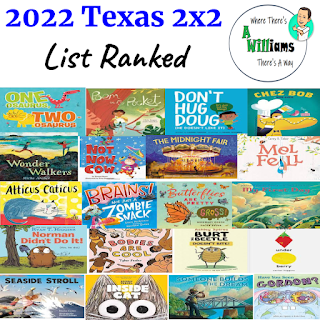

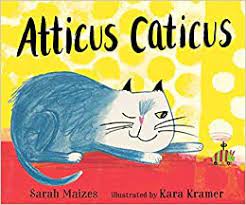


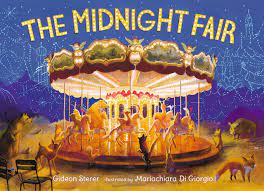



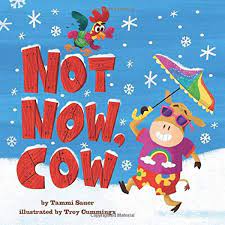




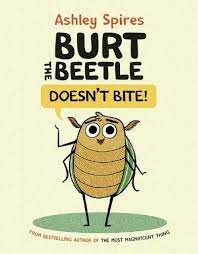



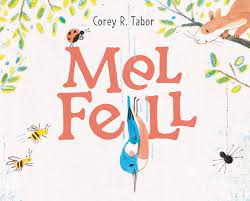





Comments
Post a Comment